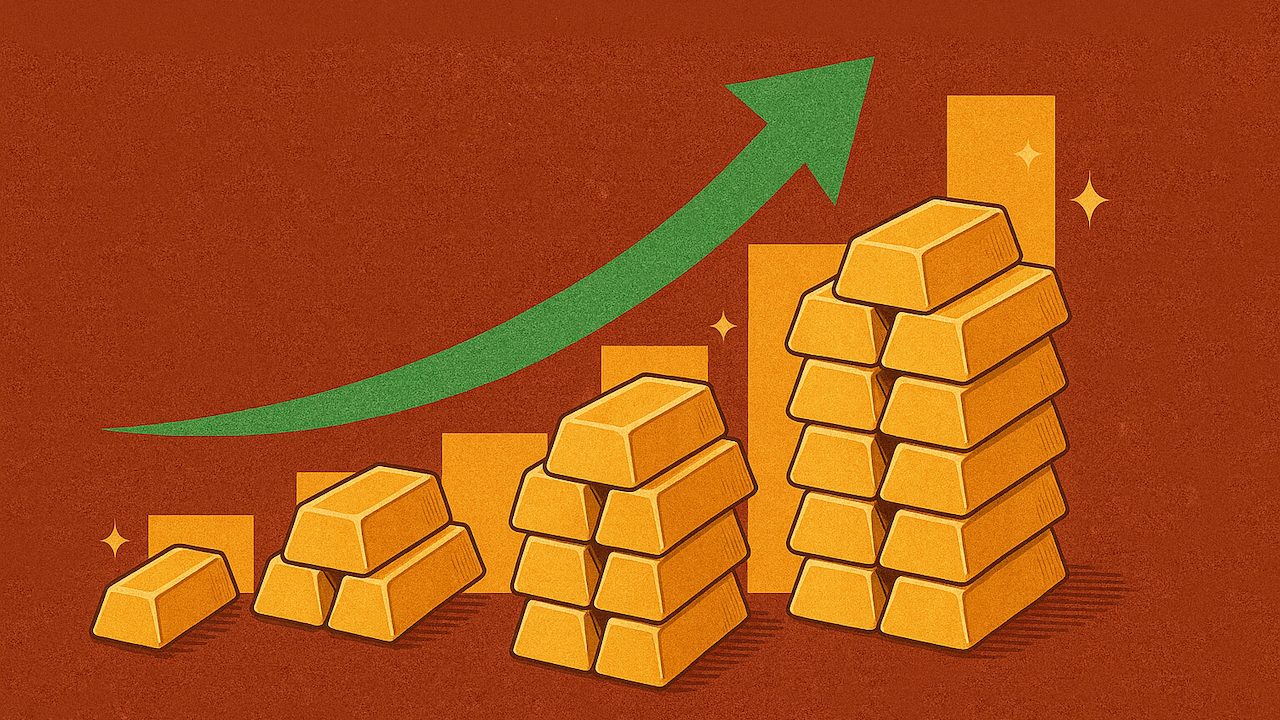(Mike Maharrey, Money Metals News Service) The strongest physical investment gold demand since 2013 helped push overall demand up a healthy 3 percent through the first half of 2025, but American investors, by and large, sat on the sidelines.
Including over-the-counter investment (OTC), gold demand totaled 1,249 tonnes in H1, according to data compiled by the World Gold Council.
With a strong 26 percent price gain in H1, the value of total gold demand surged by 45 percent year-on-year, reaching $132 billion.
Central Banks Support Global Market
Central bank gold buying continued to provide steady support for the gold market. Central banks globally bought a net 166 tonnes of gold in the second quarter, bringing the 2025 increase in gold reserves to 378 tonnes.
Central bank purchases have slowed somewhat. The second quarter charted the lowest level of central bank gold buying since the second quarter of 2022. However, it was still 41 percent above the quarterly level typical between 2010 and 2021.
Selling by central banks, such as Uzbekistan, that often shift between buying and selling, also skewed the H1 numbers lower.
The World Gold Council noted that while central banks typically buy gold strategically, they “are not completely insensitive to its price level.”
“As such, gold’s rally so far this year, up 26 percent, to new record levels, has likely contributed to the slowdown in central bank buying. But that they continue to add gold in the face of a higher price underscores their continuing favorable attitudes towards gold as a strategic asset amid such uncertainty.”
The National Bank of Poland was the biggest buyer in the second quarter, adding 19 tonnes of metal to its reserves. That was on top of 49 additional tonnes in Q1.
Investment Demand Robust
Total investment demand was up 78 percent year-on-year. Significant positive flows into gold-backed ETFs and healthy growth in bar and coin demand both contributed to the big pickup.
Bar and coin demand was up by 11 percent in H1, rising to 582 tonnes, with Chinese and Indian investors leading the way.
Chinese bar and coin demand grew by 44 percent year-on-year in H1. Chinese investors snapped up 115 tonnes of gold bars and coins in the second quarter alone. It was the strongest H1 for physical gold buying since 2013.
India bar and coin demand grew by 7 percent through the first half of the year.
Bar and coin demand also grew in Europe, albeit at a slightly slower pace than in Asia. Overall physical investment demand in the EU was up 6 percent. Second quarter bar and coin demand more than doubled to 28 tonnes.
Meanwhile, Americans continued to sell their gold. Year-on-year bar and coin sales plummeted by 53 percent in H1. Demand in the second quarter was only 9 tonnes, the lowest quarterly level since Q4 2019.
According to the World Gold Council, “U.S. net investor demand was again affected by a double whammy of elevated profit taking and subdued levels of new purchases.”
Gold ETF investment was stronger in North America, with funds in the region adding 73 tonnes of gold in Q2.
However, Asian ETFs did even better, nearly matching their North American peers even though their collective holdings are about one-fifth the size. Asia-listed funds reported 70 tonnes of gold inflows.
In total, gold ETFs globally reported 170 tonnes of gold inflows in Q2, bringing the H1 total to 397 tonnes. That was the strongest semi-annual performance since the record-breaking 734 tonnes in H1 2020 at the outset of the pandemic.
According to the World Gold Council, “Uncertain global trade policy, geopolitical turbulence and the rising gold price all fueled inflows.”
ETFs are a convenient way for investors to play the gold market, but owning ETF shares is not the same as holding physical gold.
More generally, “Anecdotal reports suggest that institutional investment remained healthy, with continued interest from global High Net Worth investors,” according to the WGC.
Jewelry Demand at Pandemic Era Lows
While higher prices have boosted gold investment demand, it has created significant headwinds for the jewelry market.
Second-quarter gold jewelry demand fell 14 percent year-on-year. The total of 341 tonnes was the lowest since Q3 2020.
Quarterly demand was 30 percent below the five-year quarterly average of 487 tonnes.
A 17 percent dip in jewelry demand in India and a 20 percent drop in China drove the overall market lower. China and India’s combined market share fell below 50 percent for only the third time in the last five years.
The only market that reported an increase in gold jewelry demand was Iran. This was likely driven by safe-haven investment jewelry demand in the wake of Israel’s attack on the country’s nuclear program.
Gold in Tech
Gold used in technology and industry charted a modest 2 percent decline in the second quarter.
Tech/industrial gold demand was 78.6 tonnes in Q2, down slightly from 80.2 tonnes in the first quarter.
A two percent drop in the amount of gold used in electronics drove the trend.
According to the World Gold Council, the tariff situation has caused significant uncertainty in the electronics sector, impacting output.
“Many East Asian manufacturers continued to frontload orders ahead of potential tariffs and, in parallel, made significant changes to their supply chain strategies. Challenges remain in the form of export restrictions to China, with companies such as Samsung reporting significantly weakened operating profits during the quarter as a result.”
Other industrial and decorative use of gold (primarily plating and gold thread used in traditional Indian clothing) fell 3 percent annually to 11 tonnes in Q2. According to the World Gold Council, “China’s fragile economic climate has undermined demand in the luxury and plating industries.”
Mike Maharrey is a journalist and market analyst for Money Metals with over a decade of experience in precious metals. He holds a BS in accounting from the University of Kentucky and a BA in journalism from the University of South Florida.

